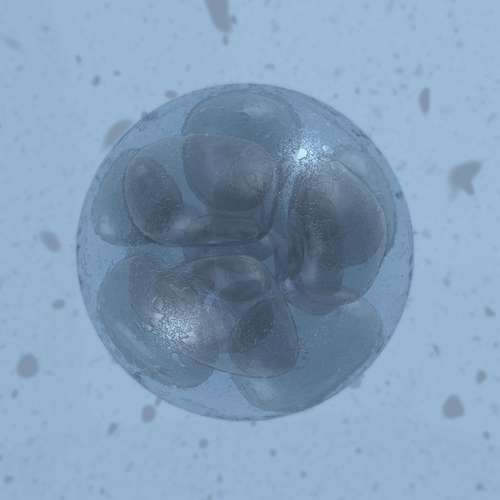Among the mysteries of embryonic developing are the cellular events that cause some cells to realize an embryonic fate, and others to give rise to placental tissue. At some point, cell lineages diverge, but where, exactly?
Embryonic lineages may emerge from embryonic stem cells (ESCs) and induced pluripotent stem cells (iPSCs), which are generally considered pluripotent, not totipotent, because they have not been thought capable of giving rise to extraembryonic cell types, specifically, placental trophoblasts. Yet ESCs and iPSCs may be more flexible than was once thought. Indeed, according scientists at the University of Missouri, ESCs and iPSCs may enter a state of heightened potency, one that can lead to all the main developmental cell lineages, including the placental trophoblast.
This discovery was serendipitous. The University of Missouri researchers were attempting to isolate trophoblast stem cells from human embryonic stem cells (hESCs) that had been exposed, briefly, to a factor called bone morphogenetic protein (BMP). They also added two other drugs that temporarily inhibited biochemical pathways associated with the pluripotent state of stem cells.
When these manipulations resulted in a cell colony, the scientists supposed that the colony was indeed composed of trophoblast stem cells. The scientists, however, reconsidered after they conducted morphological and transcriptome analyses. They realized that the colony's cells were not trophoblasts. Instead, the cells were quite closely related to—but nevertheless distinct from—their pluripotent progenitors.
At this point, the scientists, led by R. Michael Roberts, Ph.D., a professor of animal science and biochemistry, took a closer look at what they had created. Ultimately, they decided that they had stumbled upon a previously unknown form of human embryonic stem cell.
“These new cells, which we are BMP-primed stem cells, are much more robust and easily manipulated than standard embryonic stem cells,” said Dr. Roberts. “BMP-primed cells represent a transitional stage of development between embryonic stem cells and their ultimate developmental fate, whether that is placenta cells, or skin cells or brain cells. We can use these new stem cells for future research to better understand how embryos are organized.”
He added that BMP-primed cells could shed light on prenatal problems such as shallow placentas, which can cause conditions such as pre-eclampsia.
The scientists presented their work April 13 in the Proceedings of the National Academy of Sciences, in an article entitled, “Heightened potency of human pluripotent stem cell lines created by transient BMP4 exposure.”
“Here, we report the acquisition of a unique stem cell phenotype by both human ES cells (hESCs) and induced pluripotent stem cells (iPSCs) in response to transient (24–36 h) exposure to bone morphogenetic protein 4 (BMP4) plus inhibitors of ACTIVIN signaling (A83-01) and FGF2 (PD173074),” wrote the authors, “followed by trypsin dissociation and recovery of colonies capable of growing on a gelatin substratum in standard medium for human PSCs at low but not high FGF2 concentrations.”
The authors added that the self-renewing cell lines exhibit totipotent potential and that BMP4 can prime human PSCs to a self-renewing alternative state permissive for trophoblast development.
Because BMP-primed cells are easier to grow and are more uniform, the scientists found that they were much easier to work with in a laboratory setting than traditional stem cells. The implication is that the BMP-primed cells in culture are quite similar to each other in the way they express their genetic information.
“Previously, the common thought was that embryonic stem cells transitioned straight from stem cells to their end products,” explained Dr. Roberts. “These new stem cells made us realize that embryonic stem cells exist in a number of different transitional states, which likely resemble those encountered in the early stages of embryos. This should open the door for future stem cell research that is much more efficient. We now have new stem cells that are easier to manipulate since they are already at the key transitional precipice before changing into placenta cells, skin cells, or any other kind of cell that makes up the human body.”



